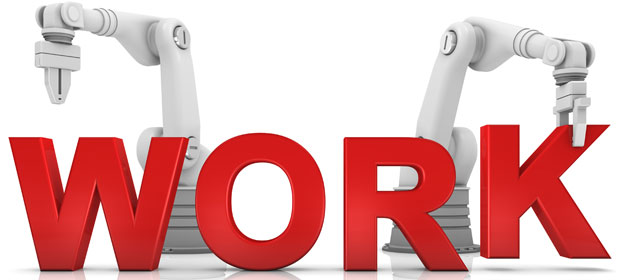Periodically, a blatantly silly idea gains currency, spreading throughout society, and it has one of two effects: Either it scares the heck out of people, or they become enraptured with its seeming plausibility.
Last week, The New York Timespublished a piece set as a dialog between two economics writers, Eduardo Porter and Farhad Manjoo, titled, “A Future Without Jobs?” I thought it fell into the silly category.
There has been a great deal of speculation lately about dwindling job prospects as automation has replaced many blue-collar jobs and is now threatening white-collar jobs.
A few years ago, the French went to a 35-hour workweek, to the horror of most non-French economics experts and pundits. Last week, more than 200,000 Frenchmen (and women) protested in Paris against suggested changes in government work rules that would increase work per week.
Closer to home, CRM seems to be moving in the direction of fewer and fewer bodies doing front-office jobs as automation expands its footprint. The natural conclusion many people leap to is that soon there won’t be any jobs left for people. Then what? The solution, as some put it, is rage against the machine — or is it?
Machine Learning
That is all part of what I will call end-of-paradigm behavior. A paradigm begins when a new category opens up, usually because technology makes it possible. The new paradigm makes new jobs possible, and for a time, the ranks of companies in this new segment swell.
Soon, however, when technology continues its relentless improvement, jobs become less plentiful as companies seeking greater profits learn to do more with less.
It’s called “productivity improvement,” and it can be nerve-wracking if your job is considered in the way of a productivity boost. That’s when people start worrying about the end of work and creeping socialism.
That has always gone on. The Industrial Revolution, which was all about manufacturing and especially textile production, started when nimble inventors made machines that could spin thread from raw cotton.
Initially, one machine could run as many as a dozen spindles that captured this output, and a single operator could manage it. Over the course of a single lifetime, the number of spindles doubled and doubled until one person could look after more than a thousand spindles.
These and other innovations in thread-making and fabric production put people out of work, and the talk was that machines would take over the world. That didn’t happen. In fact, it never happens. True, jobs go away, and people who do not or cannot retrain are left high and dry as the tide recedes. Somehow, though, there are still jobs, especially new jobs in new fields.
Moore’s Law at Work
For decades, the front office was a bloated job fair, and many of its positions were tedious and manually performed. Take sales as an example. For many companies, lead generation meant broadcast advertising in trade journals and trade shows, which scared up meager leads, resulting in the need for cold calling as the No. 1 sales activity.
As CRM automation has improved, our machines and systems also have improved the jobs of front-office workers. True enough, fewer people are employed in the front office today than 25 years ago. Quotas are higher, but thanks to really good sales and marketing automation and analytics, those quotas are far more attainable.
I don’t know if there are fewer jobs in customer service, but I can say that there are many, many more ways to get a problem solved than simply waiting in a phone queue to speak with a customer service representative.
You can look at these examples as cutting jobs if you want, but they’re also great examples of productivity growth.
At the same time, though, there are more varied and higher-quality job categories today than there were 25 years ago. For instance, who could have imagined the role of a social marketer back then? It’s all here, thanks to the relentless improvement of technology referred to as Moore’s Law. As raw processing power increases, there’s more to take advantage of and that drives innovation.
Now, back to the textile example. Improvements in steam engines made them more reliable and powerful and able to drive bigger machines, which was responsible for the growth in the number of spindles one worker could look after.
Work Goes On
In our world, greater raw processing speed and other tech improvements in networking and storage now make it possible for machines to connect to each other without any human input. That will continue, but it hardly signals the end of work.
What it does signal is the end of a paradigm. In the economic world, paradigms often run their course in the span of a human lifetime or now the span of a working life.
Either way, when the consolidation from automation really hits, the only people left standing are those who have grown up and spent their careers working within the paradigm. So naturally, a paradigm shift looks scary, even bleak, and prognosticators form a chorus, chanting that the sky is falling.
The sky isn’t falling. Our jobs are being pushed closer to the customer to provide services they need. We are supported by automation that removes friction and tedium from our work lives. Our ultimate job is to stay abreast of change, not to avoid it.

























































